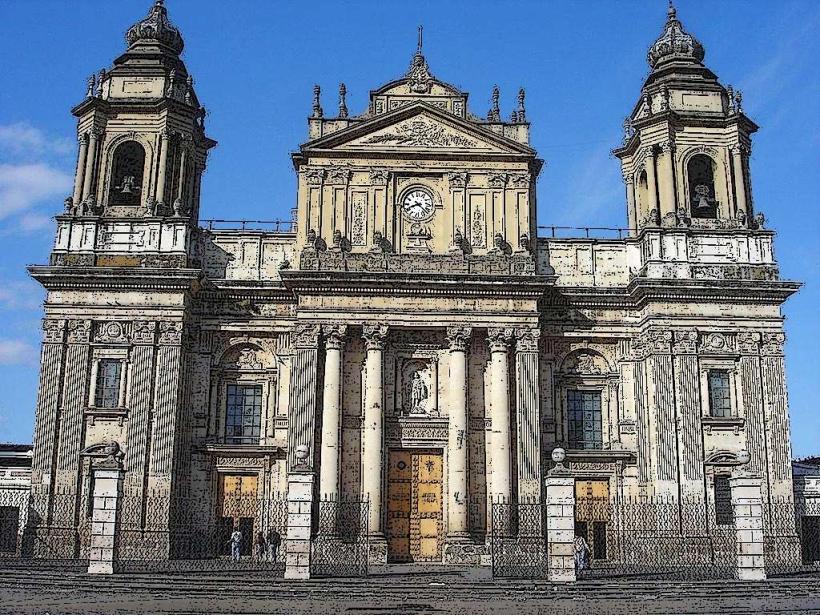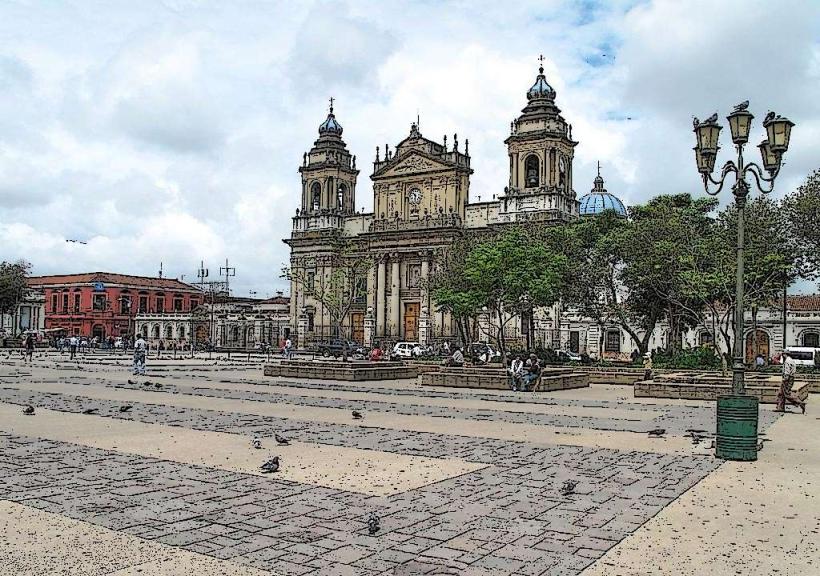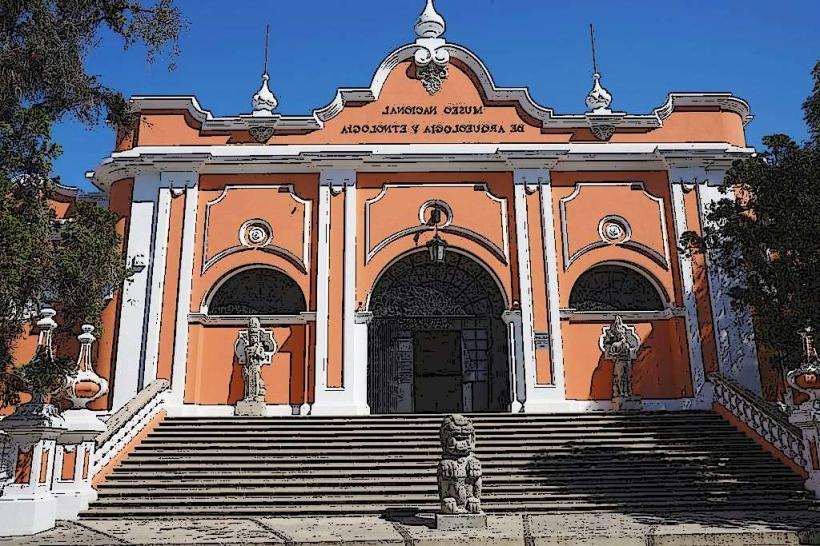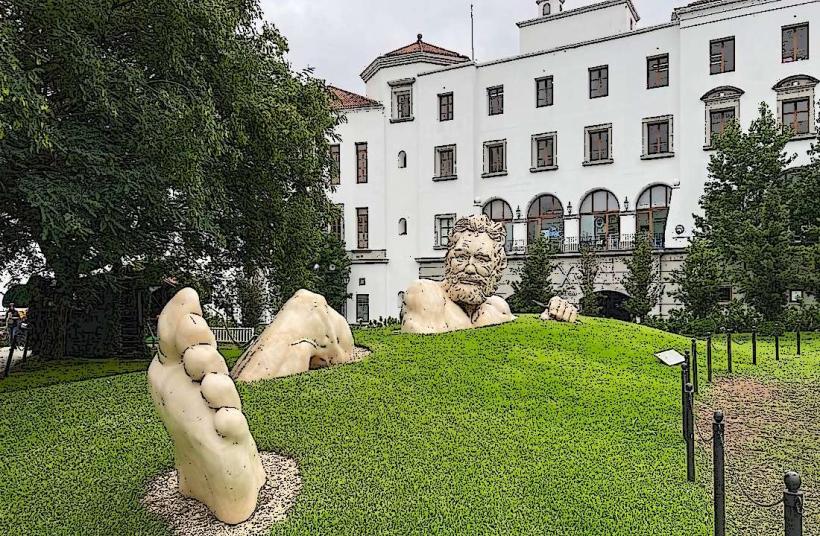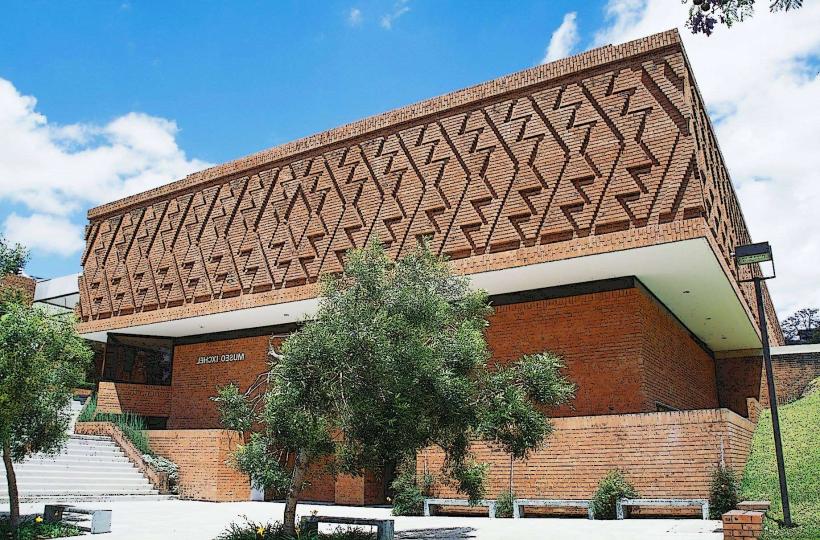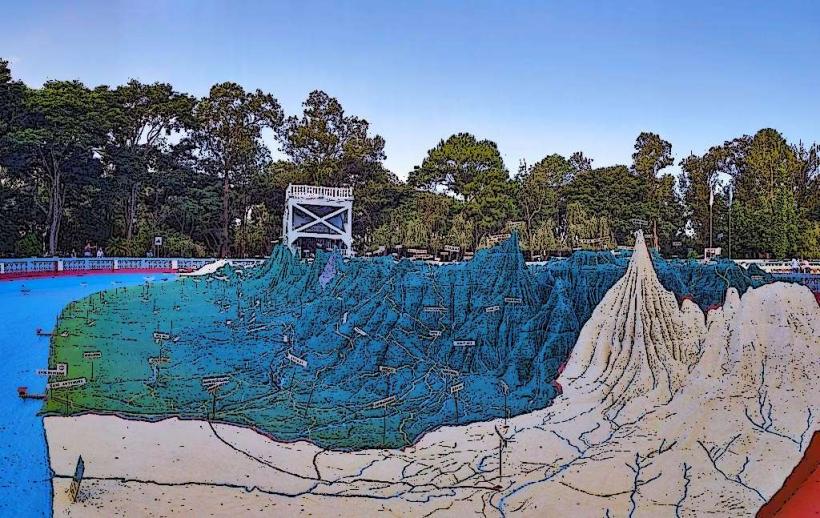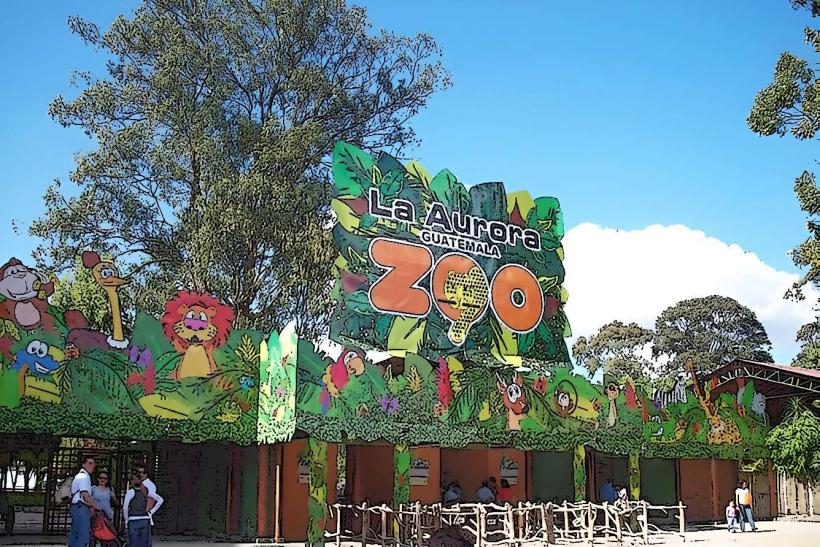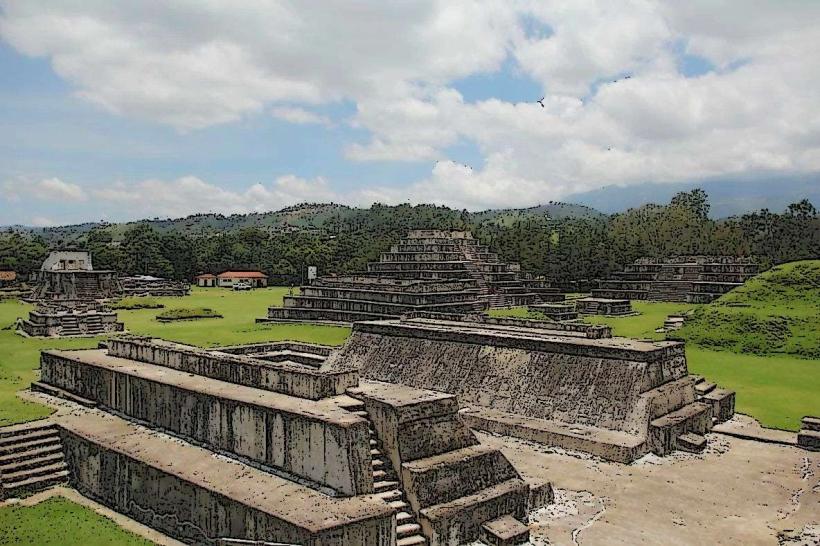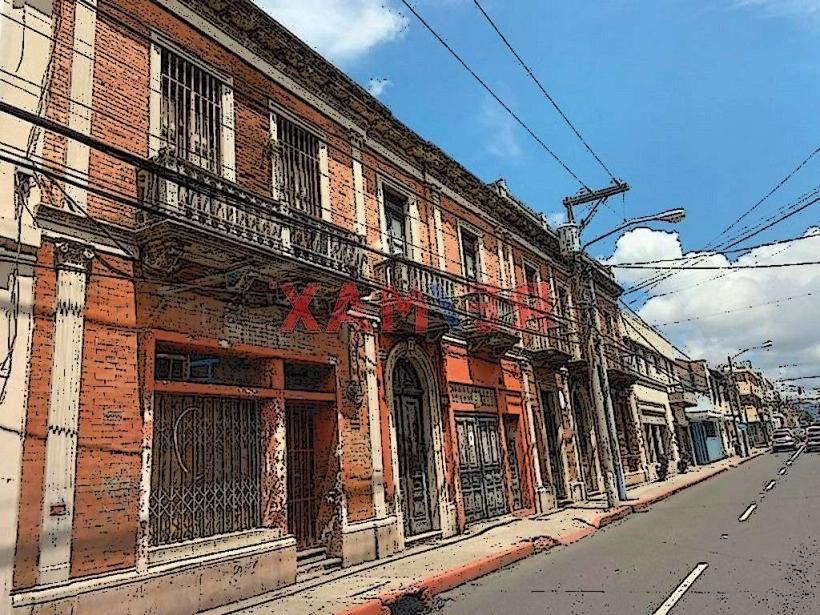Information
Landmark: National Palace of CultureCity: Guatemala City
Country: Guatemala
Continent: North America
The National Palace of Culture (Palacio Nacional de la Cultura) in Guatemala City is one of the most important and iconic buildings in the country. It serves as a symbol of Guatemala’s political history and cultural heritage. Located in the heart of the city, across from the Metropolitan Cathedral and facing the Parque Central (Central Park), the palace has been the center of Guatemala's government for many decades.
History and Construction:
The National Palace of Culture was built between 1939 and 1943 under the direction of then-President Jorge Ubico. The project was designed by the architect Juan P. D'Armas and aimed to create a structure that would reflect the nation's strength and modernity during the early 20th century. It replaced the former colonial-era palace, which had been damaged during earthquakes and was deemed inadequate for the needs of a modern state.
The design of the National Palace is influenced by a mix of Renaissance and Baroque styles, which were intended to evoke a sense of grandeur and authority. The building's construction used local materials, and its layout was planned to accommodate various government functions.
Architectural Features:
The National Palace of Culture is an imposing structure, with a grand facade that blends classical elements with the features of Art Deco and Neoclassical styles. The building is constructed from limestone and has a large central courtyard, surrounded by galleries and rooms for administrative and ceremonial purposes.
Facade and Main Entrance:
The front facade of the palace is grand and symmetrical, with ornate columns, arches, and decorative elements. The main entrance is marked by a large arch, which leads into a spacious inner courtyard. The exterior also features large windows, intricate carvings, and statues of significant figures in Guatemala's history.
Central Courtyard:
The palace features a central courtyard, which is the heart of the building. This courtyard is open to the sky and is surrounded by an arcade with columns. It provides a tranquil space amidst the hustle of the surrounding city. The courtyard is often used for ceremonial purposes and serves as a backdrop for events and gatherings.
Interior Rooms and Halls:
The interior of the National Palace is richly decorated, with each room designed for different government functions. The rooms reflect a combination of Neoclassical, Baroque, and Renaissance influences, with marble floors, elegant chandeliers, intricate wooden paneling, and detailed frescoes.
The Grand Hall (Salón de los Espejos): One of the most impressive rooms in the palace is the Grand Hall, often referred to as the "Hall of Mirrors." This room is used for official state events and is decorated with large mirrors, gold accents, and murals depicting historical scenes of Guatemala's past.
The Presidential Office: The room where the President’s office used to be is now a museum space. Its walls are adorned with beautiful artwork, and the area is often included in guided tours to highlight its historical significance.
The Museum of the National Palace: Today, parts of the National Palace are open to the public as part of the Museum of the National Palace. The museum offers a look into the history of the building, the country’s political development, and the significance of the architecture. Exhibits include photographs, documents, and objects from Guatemala’s past, including items from the era of Jorge Ubico and the country's transition to democracy.
Art and Murals:
One of the most remarkable features of the National Palace is the collection of murals that adorn the walls throughout the building. These murals were painted by prominent Guatemalan artist Carlos Mérida and others, and they depict key moments in the country’s history, including the Spanish conquest, indigenous culture, and the political and social struggles of the 20th century.
The murals are not just decorative but also serve as a visual narrative of the nation's identity and transformation. They are powerful representations of Guatemala’s rich cultural heritage and the ongoing journey toward independence and democracy.
Cultural and Political Significance:
The National Palace of Culture has played a crucial role in Guatemala’s political history. It has served as the seat of the Guatemalan government for several decades and has been the site of many important political events, including the inauguration of presidents and other major government functions.
The building also holds symbolic importance as a space for national unity and identity. It has been a focal point for various movements and protests, especially in the context of the country’s complex political landscape, marked by periods of military rule, civil war, and transition to democracy.
Modern-Day Use:
Today, the National Palace is no longer the seat of government, as the government functions have moved to other buildings in the city. However, the National Palace remains an important symbol of the country’s history and political life. It is now primarily used for cultural events, exhibitions, and tourism, and it is open to the public as part of Guatemala City’s historical district. Visitors can explore the palace, learn about the country’s political past, and appreciate the architecture and murals that are integral to Guatemala’s identity.
Visitor Experience:
The National Palace offers guided tours for visitors, allowing them to explore the various rooms, halls, and courtyards. The palace is particularly popular for its murals, which are a major highlight. The museum exhibits offer insight into the history of Guatemala, as well as a closer look at the architecture and art of the building.
The surrounding area is also significant, with the Parque Central and nearby landmarks such as the Metropolitan Cathedral, making the National Palace a central part of a visitor’s exploration of Guatemala City.
Preservation and Restoration:
The National Palace has undergone various restoration efforts over the years to preserve its historical integrity. Efforts have focused on preserving the murals, artwork, and structural elements of the building while maintaining its original grandeur. The building continues to be an important site for both cultural celebrations and political events.
In summary, the National Palace of Culture is not only an architectural gem but also a significant symbol of Guatemala’s history. From its construction during the Ubico era to its current role as a cultural and historical center, the palace remains a testament to the country's rich heritage and evolving political landscape.

